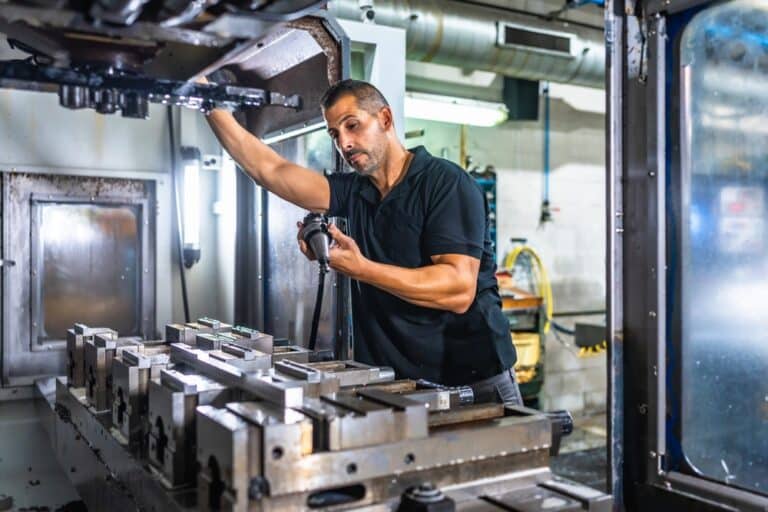To make this measure more effective and tailored to the specific context of your company, we recommend that you first perform an overall analysis of your energy situation.
Optimisation of machine tool operation via dynamic control systems
The operation involves using dynamic control systems in machine tools fitted with Computer Numerical Control (CNC). These systems allow the operating parameters of machine tools to be adjusted in real time to optimise their performance.
This regulation is made possible with various sensors: tool temperature sensors, vibration sensors and spindle load sensors. Dynamic control systems allow cutting parameters (cutting speeds, feed rate and cutting depth) to be optimised.
The measure can lead to some reduction in electricity consumption. The installation of this technological innovation is easy to implement but requires a production shutdown and would entail a medium- to long-term return on investment, thanks to the increased service life of the tools.
Changing parameters, enabled by smart servo functions, aims to remove as many shavings as possible in a minimum amount of time. This results in shorter cycle times, longer tool life, and reducing machine load.
Feed control is achieved by continuously monitoring the machine’s spindle power and constantly adapting the feed rate to keep it optimal.
Miscellaneous savings
- Financial savings are achieved particularly through the reduction of machining time, lower specific consumption in kWh/kg of product and longer tool life.
- The fact that these systems use high energy-efficiency motors, as well as frequency inverters to adjust speed according to actual requirements is another advantage in terms of energy. These also facilitate the standby mode of the machines, thus reducing idle operation.
- There is active vibration suppression, allowing more shavings to be removed in a given time. This function enables greater cutting power while preserving the tool and machine.
- Dynamic control systems also enable the optimisation of movement paths and avoid unnecessary movements.
State subsidy application
State subsidies
Please note : any application for government non-government subsidies must comply with the “incentive effect”, subject to compliance with the subsidy conditions
To ensure that the incentive effect of the aid is respected, no binding commitments may be made (acceptance of a quote; advance)
- SME Packages – Sustainability
- Aid for small and medium-sized companies, covering up to 70% of eligible costs for carrying out a project aimed at reducing their environmental impact. The total project cost must be between €3.000 and €25.000 excluding VAT.
- For more informations :
- Chambre des Métiers for craftsmen (Chamber of Skilled Trades and Crafts)
- Chamber of Commerce for companies in the non-craft sectors
- Environmental protection scheme – Investment aid for the protection of the environment
- Verification of company eligibility and costs: General Directorate for Industry, new Technology and Research
- Support in drawing up the aid application file prior to submission to the Ministry of the Economy
- For any questions : Luxinnovation
- More information and guidance for companies on investing in the environment can be found in the Simplified Guide for Companies
N.B. While several state subsidies cannot be granted for the same project, they can be combined with supplier subsidies.
Subsidies from electricity and natural gas suppliers
Since 2015, natural gas and electricity suppliers are required to make energy savings for consumers under the obligation scheme. Since then, energy suppliers have been offering support and advice, as well as subsidy programmes for consumers to implement energy efficiency measures. The amount of the premium is proportional to the annual energy saving. The following suppliers offer this service for companies:
N.B. Supplier subsidies can be combined with a state subsidy for the same project.
